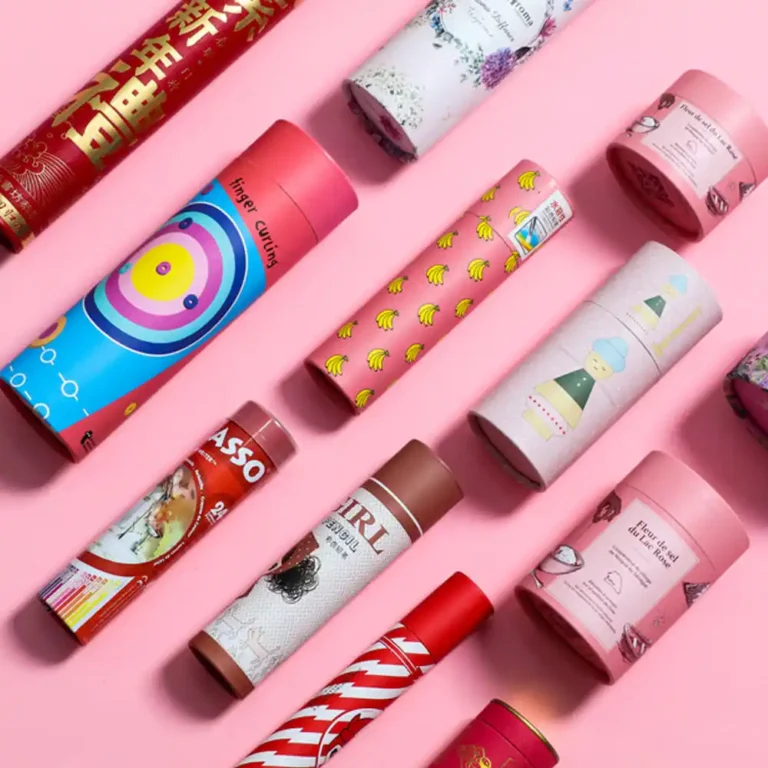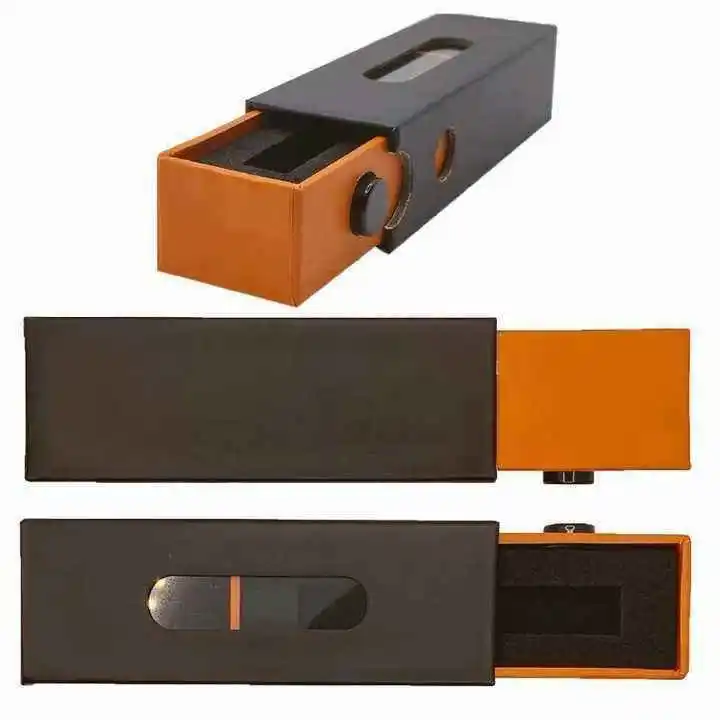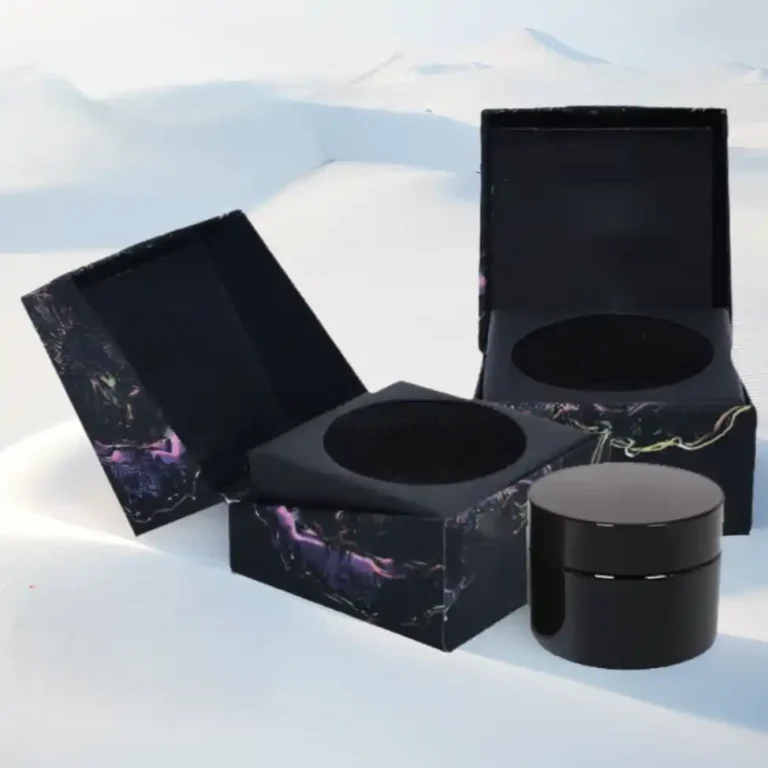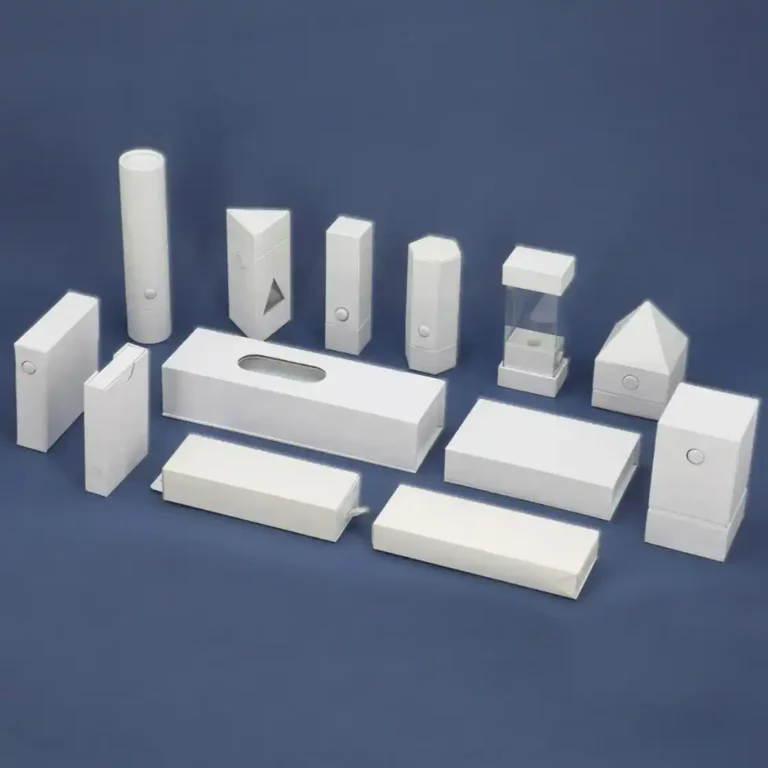Mehrdimensionale Innovation und nachhaltige Zukunft: Die fünf Kerntrends der High-End-Verpackung entschlüsseln
Abstrakt
Hochwertige Verpackungen entwickeln sich von statischen Behältern hin zu intelligenten, unauffälligen Markenmedien. In diesem Beitrag entschlüsseln wir fünf Kerntrends, die die nächste Welle prägen: visuelle Stilisierung, nachhaltige Materialien, intelligenter Fälschungsschutz, interaktive Erfahrung und Kreislaufwirtschaft. Hier finden Sie praktische Tipps für den Luxus-, Schönheits-, Wein- und Spirituosen-, Elektronik- und Boutiqueneinzelhandel - auf der Grundlage dessen, was Premiumkäufer tatsächlich bemerken, behalten und weitergeben.
Inhaltsübersicht
1. Visuelle Stilisierung: Personalisiertes Design führt zur Markendifferenzierung im Wettbewerb
Käufer von Luxusgütern kaufen nicht nur Produkte, sondern auch Signale. Die visuelle Gestaltung ist die Art und Weise, wie die Verpackung diese Signale bewusst und zurückhaltend aussendet.
Farbsysteme und Veredelungen für Premium-Rückruf
Verwenden Sie eine disziplinierte Kernpalette mit einem Akzentfarbton für saisonale Geschichten. Kombinieren Sie dies mit haptischen Oberflächen - Soft-Touch, Leinenstrukturen, Blindprägung, Spot-UV und Heißfolie - um einen unverwechselbaren Wiedererkennungswert zu schaffen. Zum Beispiel kann eine minimalistische, starre Schubladenstruktur mit einer subtilen Folienprägung eine sofortige Regaltrennung ohne visuelle Störungen bewirken. Entdecken Sie strukturierte Formate wie eine Schmuckkästchen mit fester Schublade für präzises, wiederholbares Unboxing.
Ikonische Strukturen, die die Enthüllung inszenieren
Magnetverschlüsse, zweitürige Schalen, gerahmte Deckel und ausziehbare Böden verlangsamen das Auspacken gerade genug, um die Vorfreude zu steigern. Eine maßgeschneiderte magnetische Form - wie ein Luxus-Magnet-Geschenkbox-Hält die Linien sauber und schützt gleichzeitig empfindliche Oberflächen.
Materialien, die sich hervorragend fotografieren lassen
Texturen mit geringer Spiegelung und ausgewogenen Weißanteilen vereinfachen das Farbmanagement bei sozialen und D2C-Fotos. Wenn Ihr Sortiment auf vergoldete Akzente setzt, testen Sie die Reflexionskontrolle mit matten Laminierungen und Mikroprägungen, um harte Hotspots zu vermeiden. Für Parfüm und Haushaltsdüfte ist ein strukturierter Einsatz in einer Starre Parfümdose verhindert ein Verdrehen und hält die Flaschenausrichtung kameratauglich.

2. Nachhaltige Materialien: Umweltfreundliche Technologie rekonstruiert die Wertschöpfungskette der Verpackung
Nachhaltigkeit wird von der Einhaltung von Vorschriften zum Wettbewerbsvorteil, und Materialien sind der erste Hebel.
Faseroptimierung und Monomaterialdenken
Die richtige Gewichtung der Kartonsorten und die Umstellung auf Monomaterial-Designs machen das Sortieren intuitiv. Berücksichtigen Sie FSC-zertifizierte Platten, recycelte Inhalte, wo es die Leistung zulässt, und kunststofffreie Fenster. A Geschenkbox aus Kraftpapier oder Geschenktüte aus Papier kommuniziert die ökologische Absicht und bewahrt gleichzeitig ein hochwertiges Aussehen durch Textur und geschmackvolle Folie.
Biotinten, Beschichtungen und Klebstoffe
Druckfarben auf pflanzlicher Basis und Beschichtungen auf Wasserbasis reduzieren die VOC-Emissionen. Heißschmelz- und Stärkeklebstoffe verbessern die Repulpierbarkeit. Wenn Sie noch Metallisierungshinweise benötigen, versuchen Sie es mit Kaltfolien mit definierten Trefferbereichen anstelle von Vollflächenfolien, um die Materialintensität zu verringern.
Nachfüllen, ersetzen und wiederverwenden
Entwerfen Sie Trays und Cradles für den einfachen Austausch von Komponenten und zukünftige Nachfüll-SKUs. Modulare Hohlräume reduzieren die Veralterung bei Farb- oder Zubehöraktualisierungen. Zusammenklappbare Konstruktionen wie faltbare Geschenkboxen-Minimierung der logistischen Emissionen und der Lagerfläche.

3. Intelligente Fälschungsbekämpfung: Digitale Technologie baut eine Vertrauensbarriere auf
Fälschungen untergraben den Wert am schnellsten in Kategorien, in denen die Verpackung der erste Beweis für die Echtheit ist.
Mehrschichtige Sicherheitsarchitektur
Kombinieren Sie offene Merkmale (optisch variable Folien, Mikrotext, Guillochierung) mit verdeckten Merkmalen (UV-Markierungen, Taggants) und digitalen Tools (eindeutige IDs, serialisierte QR-Codes). Verwenden Sie serialisierte Codes, um die Herkunft zu überprüfen und den Inhalt nach dem Scannen zu entsperren.
NFC, QR, und dynamische Serialisierung
Nahfeld-Etiketten und dynamische QRs verknüpfen jedes Paket mit einem einmaligen Verifizierungsdatensatz und schließen so den Kreis zwischen Fabrik, Einzelhandel und Wiederverkauf. Kombinieren Sie für SKUs mit hohem Risiko manipulationssichere Siegel mit starren Gehäusen wie einem kindersichere Verpackung wo Compliance und Premium Cues aufeinandertreffen.
Vertrauenssignalisierung bei der Unboxing-Reise
Drucken Sie Mikro-Sicherheitsmerkmale in Zonen, die nur beim Auspacken sichtbar sind, nicht auf der Außenhülle. Dies schafft ein Gleichgewicht zwischen Eleganz und Sicherheit: Die Echtheitsprüfung erfolgt auf natürliche Weise, ohne auf der Vorderseite zu schreien.
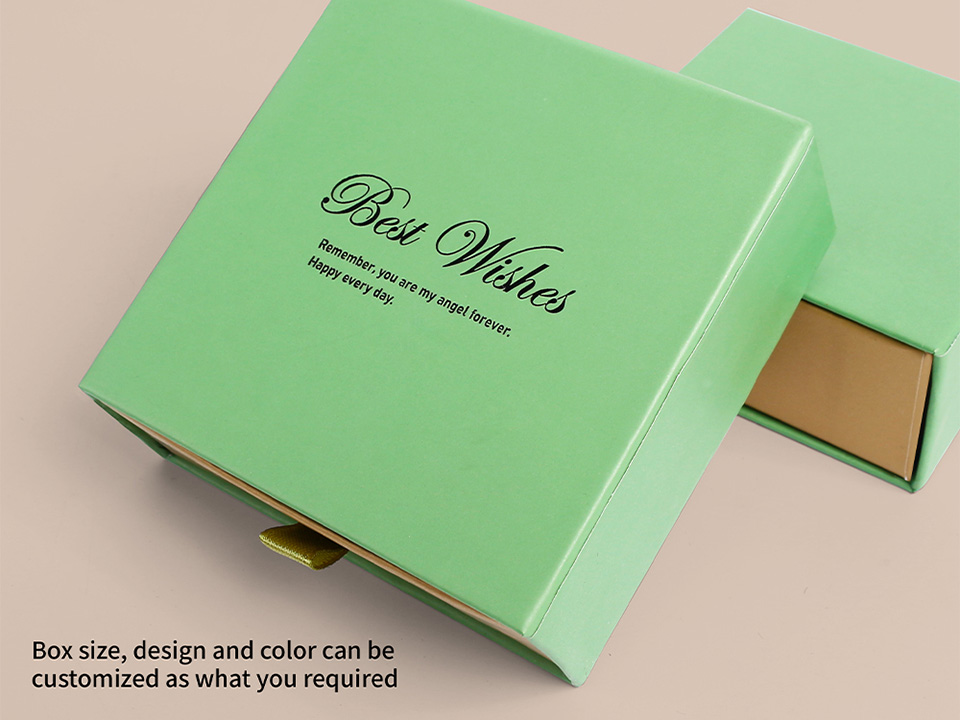
4. Interaktive Erfahrung: AR und datengesteuertes Szenario-Marketing
Die Verpackung ist heute eine mediale Oberfläche. Wenn sie gut gemacht ist, wirkt sie wie ein Concierge, der den Käufer mit Namen begrüßt.
Augmented-Reality-Erzählungen
AR kann Oberflächenmuster animieren, Handwerksschritte zeigen oder eine Vorschau auf Styling-Ideen geben. Halten Sie die Marker diskret - ein Logo-Lockup oder ein Eckmotiv - damit die physische Ästhetik zeitlos bleibt und die digitale Ebene frisch bleibt.
Erstanbieterdaten mit Zustimmung
Serialisierte Scans können die Post-Purchase-Journeys eröffnen: Pflegetipps, Treueanmeldung, limitierte Drops. Dadurch werden generische Beilagen durch signalstarke Opt-in-Momente ersetzt. Bei Elektronikprodukten sollten Sie die Integration eines schmalen Bildschirms oder eines QR-to-Video-Flusses in Betracht ziehen. Videobroschüre kann für VIP-Kits und die Schulung von Einzelhandelsmitarbeitern verwendet werden, ohne die Hauptlinie zu überlasten.
Einzelhandelstheater und Auffindbarkeit
Freistehende Displays und gestaffelte Steigbügel sorgen dafür, dass sich die Kunden auf Armlänge nähern. Verwenden Sie shoppable QR und Musterschubladen, um den Schwund zu reduzieren und gleichzeitig die Taktilität zu erhalten. bedruckte Wellpappkartons und kohärente Grafiken für Versender und Regal.
5. Kreislaufwirtschaft: Wiederherstellung des Kreislaufs von Produktion, Verbrauch und Regeneration
Kreislaufwirtschaft ist kein Slogan, sondern ein diszipliniertes Designverhalten über den gesamten Lebenszyklus hinweg.
Design für die Demontage
Vermeiden Sie schwer zu trennende Laminate und gemischte Substrate. Kennzeichnen Sie die Materialfamilien deutlich, minimieren Sie die Klebefläche und verwenden Sie, wenn möglich, Friktionsbeschläge. Ein Monopapier-System mit abnehmbarem Farbband kann Luxusmerkmale beibehalten und gleichzeitig das Recycling erleichtern, wie man an der kuratierten Geschenkboxen aus Papier.
Umgekehrte Logistik und zweites Leben
Bauen Sie Zweitnutzen in die Struktur ein: Aufbewahrungsschubladen, stapelbare Fächer oder modulare Trennwände, die Schreibtische und Eitelkeiten neu organisieren. Schmuck-, Kerzen- und Kosmetiklinien profitieren von festen Formaten wie Kerzenschachteln und Schmuckkästchen auf Langlebigkeit ausgelegt.
Integration und Transparenz der Lieferanten
Schließen Sie den Kreislauf mit Lieferanten, die Faserquellen zertifizieren, Abfälle messen und Reststücke verwerten können. Veröffentlichen Sie einfache Symbole für das Ende der Lebensdauer auf der Grundplatte, um das Verbraucherverhalten mit Ihrer Designabsicht in Einklang zu bringen. Vereinheitlichen Sie bei Markenfamilien die Strukturen über SKUs hinweg, um Einsätze zu standardisieren und Werkzeuge zu schneiden - sehen Sie konsistente Systeme für alle Kosmetikboxen und Bekleidungskisten.
Zusammenfassung
Hochwertige Verpackungen entwickeln sich zu einer präzisen Mischung aus künstlerischer Gestaltung, Materialwissenschaft und vernetzter Technologie. Visuelle Stilisierung schafft Unverwechselbarkeit, die fotografiert und sich richtig anfühlt. Nachhaltige Materialien und Monomaterial-Logik machen Recycling realistisch. Intelligente Fälschungssicherheit schützt den Wert im Moment der Wahrheit. Interaktive Erlebnisse verwandeln jede Box in einen privaten Showroom. Zirkuläres Design sorgt für eine Wiederherstellung des Wertes nach dem ersten Auspacken. Wenn Sie diese Trends für Ihre nächste Markteinführung oder Auffrischung nutzen möchten, sollten Sie mit einer sauberen Systemarchitektur beginnen und dann die Veredelungen, die Sicherheit und die digitalen Touchpoints gezielt einsetzen. Für maßgeschneiderte Strukturen, Materialien und Muster besuchen Sie die Homepage oder erkunden Sie spezielle Kategorien wie Parfümdosen und Papiergeschenktüten um mit Zuversicht von der Idee zur Produktion zu gelangen.






